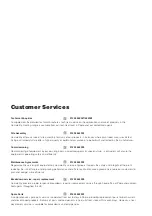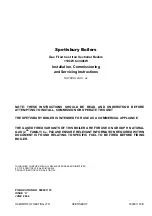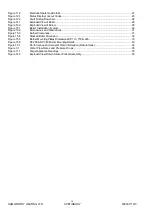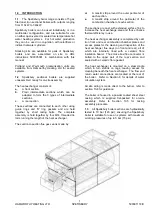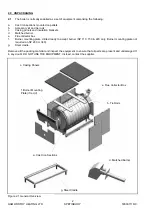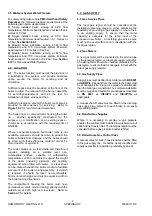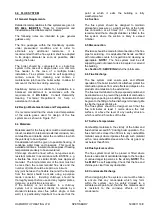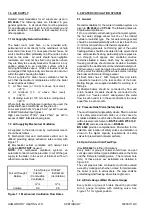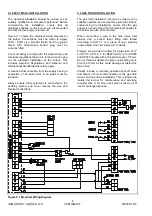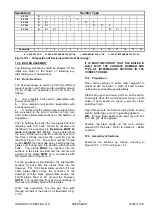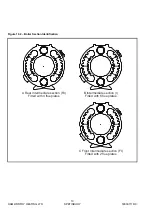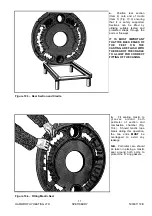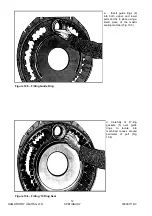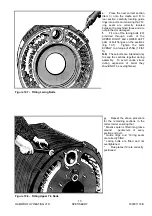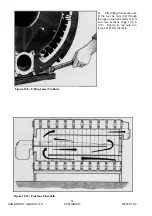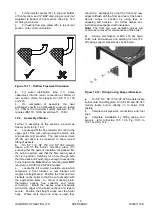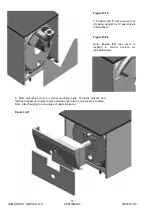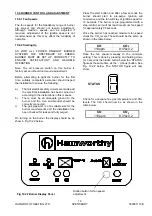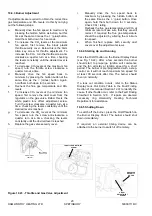
HAMWORTHY HEATING LTD
6
SPETISBURY
500001118/C
8.0 WATER CIRCULATION SYSTEM
8.1 General
Recommendations for the water circulation system are
given in
BS 6644
and
CP 342
. The following notes are
of particular importance:-
1)
In a combined central heating and hot water system,
the hot water storage vessel must be of the indirect
cylinder or calorifier type. The hot water storage vessel
should be insulated preferably with not less than 75mm
(3 in) thick mineral fibre, or its thermal equivalent.
2)
Circulating pipework not forming part of the useful
heating surface should be insulated to help prevent heat
loss and possible freezing, particularly where pipes are
run through roof spaces and ventilated cavities.
Cisterns situated in areas, which may be exposed to
freezing conditions, should also be insulated. Insulation
exposed to the weather should be rendered waterproof.
3)
Drain valves must be located in accessible positions
which permit the draining of the whole system, including
the boiler and hot water storage vessel.
4)
Each boiler has 4” N.B. Flanged flow and return
connections located on the rear section of the boiler.
Mating flanges are supplied suitable for welding to 4”
NB pipe.
5)
Multiple boilers should be connected by flow and
return headers. Headers should be connected to the
system in a "reverse return" arrangement (the water
flow in each header is in the same direction) to ensure
equal flow in each module.
8.2 Pressure Relief Valve (Safety Valve)
The most important single safety device fitted to a boiler
is its safety valve and each boiler, or in the case of a
modular installation, each bank of boilers, must be fitted
with a pressure relief valve to
BS 759
or
BS 6759
Part 1
(
ISO 4126
) and sized as shown in
BS 6644
.
BS 6644
provides comprehensive information for the
selection and location of safety valves and attention is
drawn to the higher capacity requirements of safety
valves for pressurised hot water systems.
8.3 Open Vent and Cold Feed Pipe
(See
BS 6644
for further information.)
Every boiler or group of boilers should have an open
vent pipe and cold feed pipe installed between the boiler
and the first water isolating valve. The minimum bore
(mm) of these pipes per installation are detailed in
Figure 8.3.
The vent pipe must rise continually, must not be valved
except by a design which when closed for maintenance
the boiler is open to atmosphere. The pipe shall be
protected against freezing where this might occur.
8.4 Altitude Gauge (Water Pressure Gauge)
Every boiler or group of boilers should be provided
with a gauge complete with isolating valve. See
Figure 15.1 for typical position.
7.0 AIR SUPPLY
Detailed recommendations for air supply are given in
BS 6644
. The following notes are intended to give
general guidance. In all cases there must be provision
for an adequate supply of air for both combustion and
general ventilation, in addition to that required for any
other appliance.
7.1
Air Supply By Natural Ventilation
The boiler room must have, or be provided with,
permanent air vents directly to the outside air, at high
level and at low level. For an exposed boiler house, air
vents should be fitted preferably on all four sides, but at
least on two sides. Air vents should have negligible
resistance and must not be sited in any position where
they are likely to be easily blocked or flooded or in any
position adjacent to an extraction system which is
carrying flammable vapour. Grilles or louvres must be
so designed that high velocity air streams do not occur
within the space housing the boiler.
The air supplied for boiler house ventilation shall be
such that the maximum temperatures within the boiler
house shall be as follows:
1) At floor level (or 100 mm above floor level)
= 25 °C.
2) At mid-level (1.5 m above floor level)
= 32 °C.
3) At ceiling level (or 100 mm below ceiling level)
= 40 °C.
Where both low and high level openings are used, the
grilles shall have a total minimum free area of :-
Low Level (inlet) 540cm
2
plus 4.5cm
2
per kW in excess
of 60 kW total rated input (gross).
High Level (outlet) 270cm
2
plus 2.25cm
2
per kW in
excess of 60kW total rated input (gross).
7.2 Air Supply By Mechanical Ventilation
Air supplied to the boiler room by mechanical means
should be as follows :-
1)
Mechanical inlet and mechanical extract can be
utilized providing design extraction rates comply with
Figure 7.1.
2)
Mechanical extract ventilation with natural inlet
ventilation
MUST NOT
be used.
NOTE:
For mechanical ventilation systems an
automatic control should be provided to cut off the gas
supply to the boiler, in the event of failure of air flow in
either inlet or extract fans.
Forced Draught
Boilers
Inlet air
(Combustion
Ventilation)
Extract air
(Ventilation)
m
3
/s
m
3
/s
Volume
0.9
0.6
Flow Rate per 1000 kW
Figure 7.1 Mechanical Ventilation Flow Rates
Содержание Spetisbury
Страница 30: ...HAMWORTHY HEATING LTD 24 SPETISBURY 500001118 C Figure 12 2 Fault Finding Flowchart...
Страница 36: ...HAMWORTHY HEATING LTD 30 SPETISBURY 500001118 C Figure 15 1 Boiler Installation Typical 15 0 TECHNICAL DATA...
Страница 42: ...HAMWORTHY HEATING LTD 36 SPETISBURY 500001118 C NOTES...
Страница 43: ...Notes...


